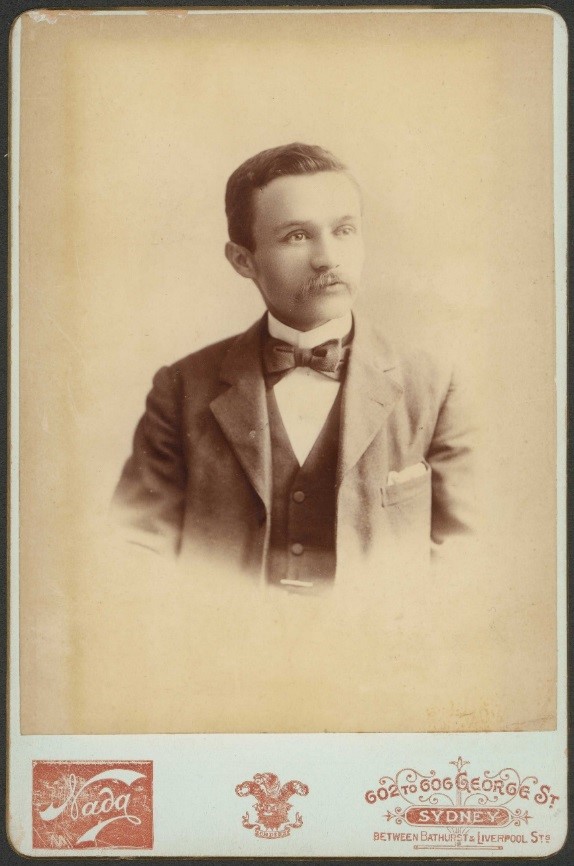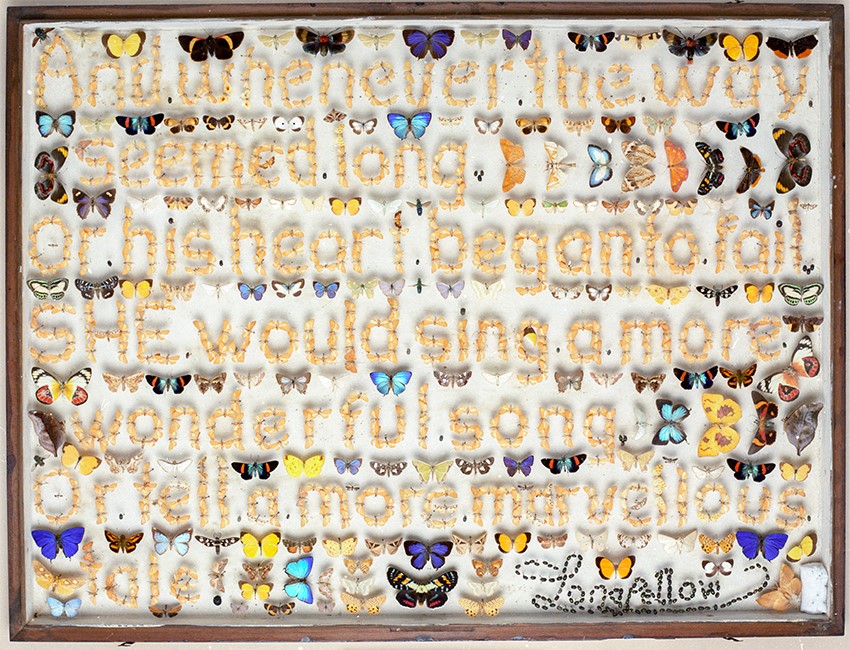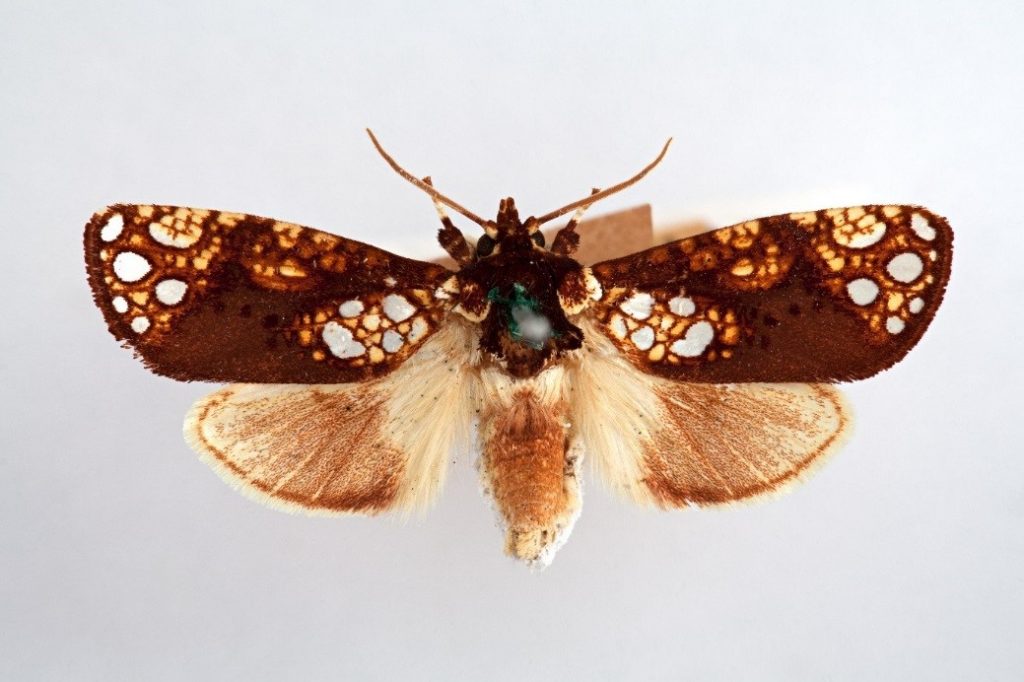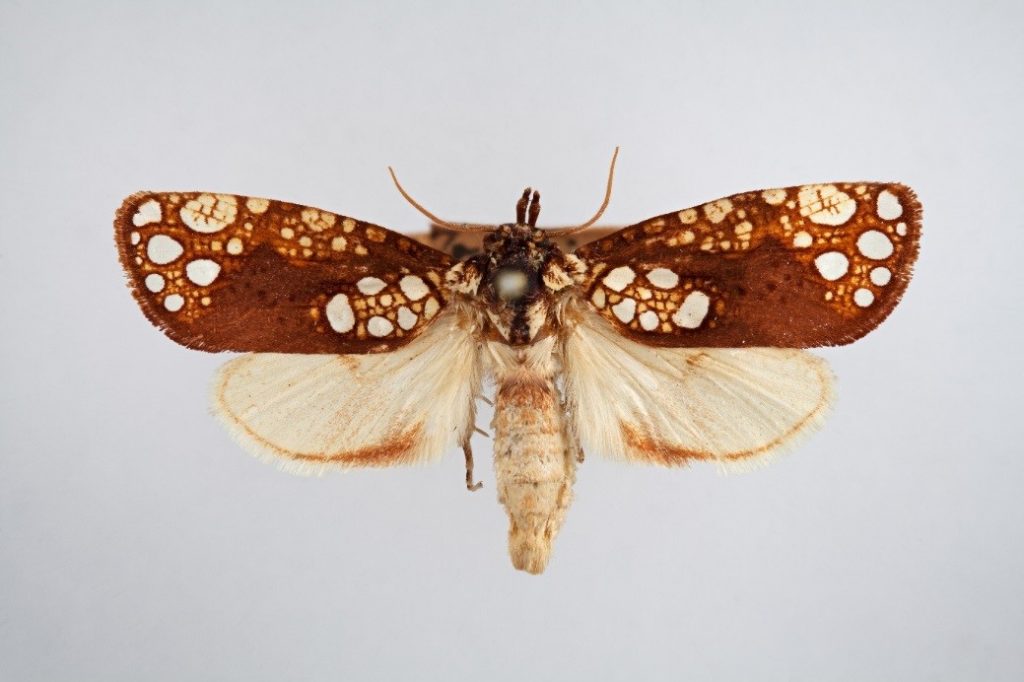
Written by Deirdre Coleman (Robert Wallace Chair of English, University of Melbourne), Nik McGrath (Archivist, Museums Victoria), and Simon Hinkley (Entomologist, Museums Victoria).
The George Lyell Collection
At the start of 2019, our multidisciplinary team working from the Museums Victoria Archives began a McCoy Seed Fund project focussed on the George Lyell Collection.
This collection at Museums Victoria includes almost 12,000 butterflies and 40,000 moths, donated by Lyell between 1932 and 1946. The Museums Victoria Archives is also the repository of Lyell’s correspondence with collectors and scientists from around Australia and overseas. Field notebooks, letter books, the photograph of Lyell as a young man at the head of this note, plus his index book (1891–1951) are also held in the Archives, together with a draft manuscript of The Butterflies of Australia, the book he co-published with G. A. Waterhouse in 1914.
Committed and devoted lepidopterist
George Lyell (1866-1951) moved to Gisborne in rural Victoria in 1890 when he was 24 years old, having been offered a job at the timber merchants firm, Cherry & Sons. Gisborne would be Lyell’s home until his death in 1951. Despite full-time work and eventual partner responsibilities, Lyell devoted time to long walks in pursuit of insect and orchid specimens. When he fell ill in 1932 he decided it was time to begin arranging for his moth and butterfly collection to be donated to what was then called the National Museum of Victoria. He was to live for almost another two decades, which was just as well considering the mammoth task of amalgamating his extensive insect collection with the Museum’s much smaller holdings. Between 1932 and 1946 Lyell dedicated himself to the laborious work of transferring, rearranging, rehousing, and documenting his Lepidoptera collection. He also built cabinets and drawers, and arranged transportation of these items by train between Gisborne and Melbourne. Whenever free from Cherry & Sons, such as at evenings and weekends, he dedicated every moment to getting his donation ready, a task which often involved re-setting and re-labelling individual specimens.
Lyell and Dodd: letters between leading lepidopterists
Collecting insects was serious business in the late nineteenth century, involving a remarkable number of people and a brisk and lively circulation of letters and specimen boxes. Frederick Parkhurst Dodd was a full-time insect dealer whose detailed and gossipy letters to Lyell, from 1897 to 1904, provide us with major insights into the increasing professionalisation of entomology in this period. Dodd and Lyell were great admirers of each other’s perfectionist skills in preparing and pinning specimens. In their correspondence they exchanged information and tips about all aspects of their craft, including how to avoid the insects becoming ‘greasy’ (Museums Victoria Archives, OLDERSYSTEM~03023). Dr Geoff Monteith, author of The Butterfly Man of Kuranda, Frederick Parkhurst Dodd (1991), tells us that Dodd’s magnificently arranged cases of insects, created a century ago and held in the Queensland Museum, are free from ‘greasy’ complications.
Tales from our study of a well curated collection
A study of the ways in which a collection like Lyell’s both depended upon and reflected changing social and institutional networks is central to our study. Insects operated as social currency, making and breaking relationships. Issues of trust as well as the codes of honour governing the entomological community are evident in the correspondence, with rhetorical and other strategies—such as specimen exchange, donation, and sale—enhancing entomological authority, credibility, and expertise. There are many notable figures mentioned in the letters we have transcribed from Dodd to Lyell: Frank Spry, James Kershaw, Dr Alfred Jefferis Turner, Oswald Lower, C. G. Llewellyn Gooding, A. Mason, Archibald James Campbell, Sidney W. Jackson and Henry Luke White. Unlike Lyell, whose focus was principally local, Dodd traded internationally, selling many thousands of insects to the British Museum and to prominent collectors such as Lord Walter Rothschild of Tring, Lord Thomas Walsingham, Charles Oberthür, James John Joicey, and Colbran Wainwright. Like Lyell, Dodd deserves a higher profile with the public. When he published an article in Tring Museum’s Novitates Zoologicae in 1906, Rothschild publicly praised him for adding ‘so much to our knowledge of the early stages of Queenslandian Lepidoptera’. Despite intense interest in 19th-century natural history, studies of Australia’s role in what was a global and imperial system are still thin on the ground.
Science as art, art as science
Dodd’s obsessive attention to all aspects of his entomological craft, from capture in the field to perfect preservation and pinning in the workshop, can be seen in the large and showy specimen cases which he took on national tour after World War 1. With one of his sons to help him load and unload the cases from the train, he made several trips from Kuranda, introducing far north Queensland’s tropical entomology to the attention of the general public in the south-eastern states. In these cases, now held in the Queensland Museum, we see how Dodd’s exquisite craftsmanship transformed ‘natural’ specimens into artful creations. In the insect case photographed below Dodd has arranged lepidoptera of various sizes and colours to pick out the following lines in praise of SHE, i.e. Mother Nature, from a popular poem by Henry Longfellow:
And whenever the way seemed long
Or his heart began to fail
SHE would sing a more wonderful song
Or tell a more marvellous tale.

If you had to pick a favourite…

In 1945, after donating his collection to the museum, Lyell was asked which of his 6177 insect species was his favourite. He replied that it was the Queensland wood moth, Dudgeonea actinias, captured by Dodd ‘from a rotting log in a creek bed at Townsville’ (Museums Victoria Archives, ARCHIVE-BOX~579). In 1903 cyclone Leonta buried that particular log under 30 feet of flood debris and no further specimens were sighted until 2015. View the occurrence record for this specimen in the ALA.

Of the original 13 specimens of this rare moth in Museums Victoria, seven are in the Lyell collection. As part of our project one male and one female specimen were selected for images obtained by multi focus stacking, meaning they were photographed a number of times and layered into one image to get as much of the specimen in focus as possible.
More collection secrets to be uncovered in coming months
It has been a privilege to work on the George Lyell Collection, and we look forward to publishing more of our findings about Australian entomologists and entomology in the coming year.
More information
- You can see records collected by George Lyell in Museums Victoria’s collection in ALA using this search: All 6008 records in the George Lyell Collection
- To browse other Australian natural history collections on the ALA view the dataset from the Online Zoological Collections of Australian Museums
- For further information about the George Lyell Collection, please contact Deirdre Coleman.